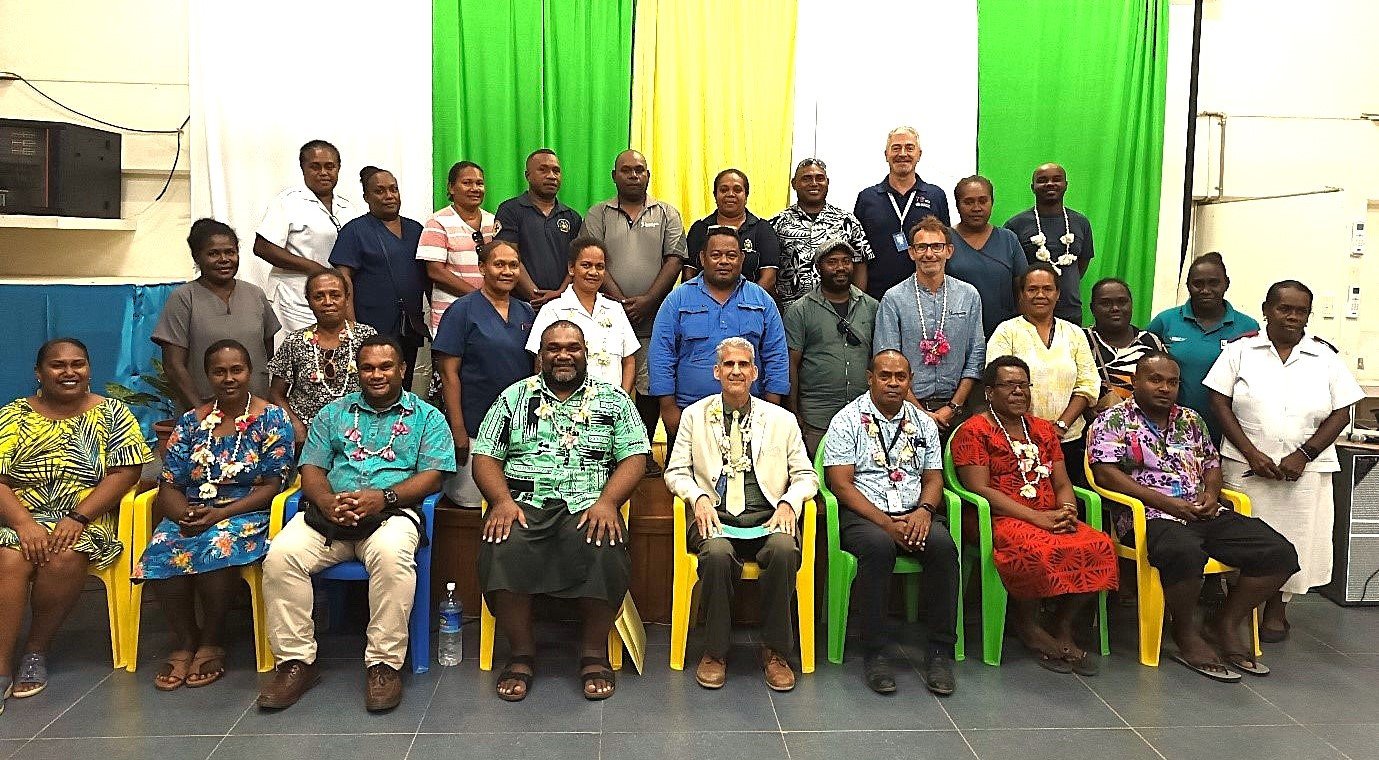
Health Ministry and World Bank launches Safe, Green, and Climate-Proof Healthcare Facility Initiative
The Ministry of Health and Medical Services (MHMS) with support from the World Health Organization (WHO) recently launched the Safe, Green, and Climate-Proof Healthcare Facility Initiative.
The Safe, Green, and Climate-proof Healthcare Facility Initiative assessment is guided by the Water, Sanitation, and Hygiene Facility Improvement Tool (WASHiT) and Climate Resilient Environmentally Sustainable Healthcare Facilities (CRESHF).
The assessment outcomes will be used to draft short- and long-term facility improvement plans covering structural design, ventilation, water, sanitation, hygiene, isolation, environmental controls, greening and more health care facility operational issues as waste management.
Speaking at the launch on behalf of the Health Minister, Deputy Secretary Health Improvement (DSHI) Dr Nemia Bainivalu thanked the WHO Country Representative and Staff, the Ministry of Environment, Climate Change, Disaster and Management, Ministry of Infrastructure, and development through the environmental Health Division.
He highlighted that with close network and collaboration, Solomon Islands will soon have a National Health Adaptation Plan to respond to health impacts of the Climate Crisis.
“Climate Change and Health is everybody’s business now. Let’s all work together and take actions in responding to negative impacts. Under this initiative, assessment of all major health care facilities throughout the country will be done and the second assessment will be done to the Area Health Center level facilities,” Dr Bainivalu said.
He reiterated the importance of the initiative, especially for the National Referral Hospital as the leading tertiary health institution in the country where “a total of 100,321 patients seeking care at NRH, 53 percent in daycare or referral clinics, 31 percent through Emergency Department, and only 16 percent admitted in the words.”
“Therefore, we need to also improve the day clinic facilities. It must be noted here that building climate resilient and environmentally sustainable health care facilities is very important in health care service delivery and will strengthen our capacity to protect and improve the health of targeted communities or population in an unstable and changing climate. This will empower care takers of these facilities to optimize the use of resources. The outcome in these health care facilities will contribute to high quality care and accessibility of services,” Dr Bainivalu explained.
Moreover, he said the assessment is becoming a priority strategically and operationally at all levels and he outlined in points;
- to accept and respond to climate change because it affects people’s health and well-being through extreme climate events and indirectly threatening the capacity of the health systems.
- the negative impacts of climate change is visible for health care facilities not being able to cope with increasing climatic risks such as extreme climate events including cyclones and floods.
- ensure that we are climate-sensitive to the risks and vulnerabilities surrounding us;
- efficient use of this limited space of land;
- Infrastructure protection and resilience. NRH and other health infrastructure must be cared for by carrying out regular maintenance checks, proper climate-resilience infrastructure design, and preparing to respond during and post-disaster events to withstand adverse impacts of climate change.
- The waste generated must also be taken care of to minimise the negative impacts from emissions of greenhouse gases into the atmosphere.
- It is crucial that essential health services continue without interruption, hence; the Ministry of Health and Medical Services is taking great care and risk management to ensure essential clinical care services delivery planning is taken seriously. The Role Delineation Policy is very careful in ensuring the clinic designs and structures are climate change resilient and IPC alignment.
“It is our responsibility at ministry, operational, provincial and community levels to be engaged in clinical change resilience projects and programs such as this initiative and I call on all health workers to play their part and allocate time and resources,” Dr Bainivalu said.
Meanwhile, WHO Country Representative Dr Howard Sobel said the event marks a significant milestone in our ongoing efforts to ensure that healthcare facilities not only provide quality care but also serve as safe and resilient spaces for both patients and healthcare workers.
Dr Sobel said the Solomon Islands, like many nations in the Asia-Pacific region, faces unique challenges due to its geographical location and climate vulnerabilities. The fact that access to safe water is only in one out of three healthcare facilities highlights the urgency of our collective action.
“This project, developed in collaboration with the Ministry of Health and Medical Services, represents a comprehensive approach to addressing these challenges. By aligning our efforts with the Solomon Islands National WATSAN Plan 2017-2023 and the Asia Pacific Health Security Action Framework, we are not only responding to immediate needs but also laying the groundwork for sustainable, long-term improvements,” Dr Sobel said.
He encouraged everyone to focus on the shared goal to transform healthcare facilities into safer, cleaner, greener, and more climate-resilient environments.
“This is not just about infrastructure; it is about protecting lives, ensuring that healthcare workers can perform their duties safely, and that patients receive the care they need in environments that promote healing and well-being,” Dr Sobel said.
Ends///
MHMS
